How To Bullet Journal for Mental Health: 19 Page Ideas
In this post, we’ll be talking about several Bullet Journal page ideas for mental health that will make you feel a little bit better even on your worst day.
When struggling with mental health and emotions run wild, it’s very therapeutic to organize it all into a journal. It helps to create a sense of control and make a first step toward working through the issues.
I think it’s especially true if you use your Bullet Journal for mental health because just the process of creating different pages can bring you some peace and quiet.
Here are some reasons why you should use your Bullet Journal for mental health and then, as usual, some great page ideas to get you started.
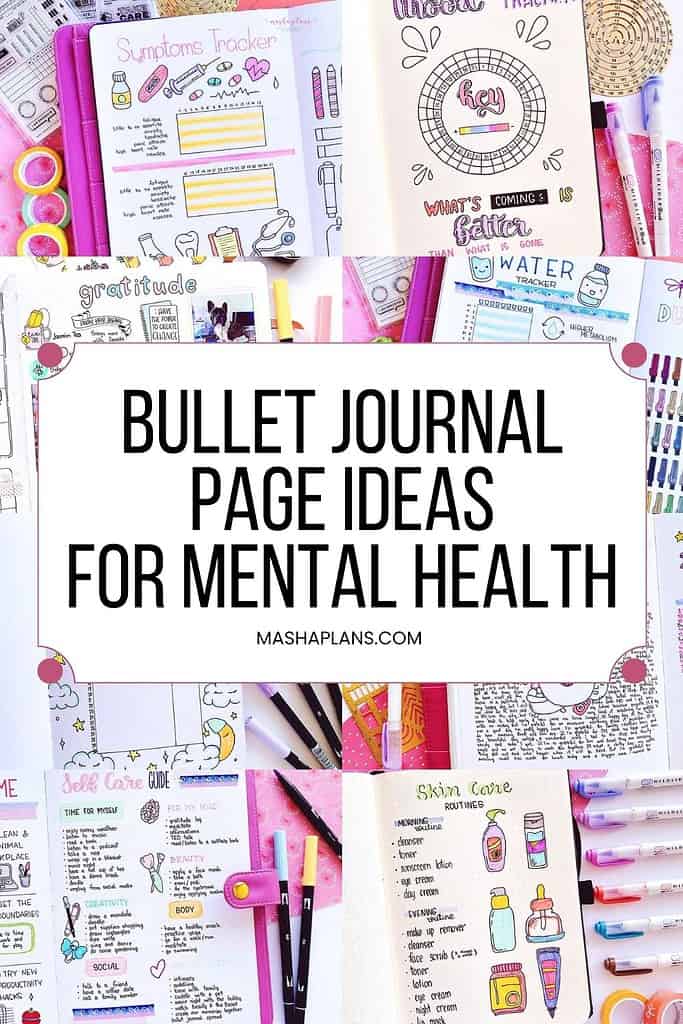
Your Bullet Journal is a fantastic tool that can help you with anything. But you probably already know that from your own experience.
I can speak for myself – it helped me to stay sane during the 2020 pandemic. I got stuck in the USA when the borders closed in March that year, away from everyone I knew, and it was unclear when I’d be able to go back home.
My Bullet Journal saved my sanity. With scary and unclear things, I felt very frightened and out of control. Spending each day with my Bullet Journal, though, helped me to get back my sense of control and to have a little moment of the day just for myself, without any worries.
We’ll go through more details on why you should use your BuJo for mental health further down, but I just wanted to start the post by sharing my own personal experience.
Be sure to check the end of the post as well since it has some FREE printables you can use in your Bullet Journal right away, plus more resources to help you on your journey.
Why Use A Bullet Journal For Mental Health
The Bullet Journal method is a very unique and customizable way to organize your life. It’s got all the best journaling and planning practices included in it. So you can really get tons of benefits by using one.
This versatile system can also be a powerful tool for promoting mental well-being. Here are just a few reasons you should consider using your Bullet Journal for mental health.
- Enhanced Self-Awareness
Your Bullet Journal can become a sacred space for self-discovery and personal growth. By regularly recording your thoughts, emotions, and experiences, you develop a deeper understanding of your mental and emotional state, leading to a better and happier life and improved well-being.
- Practice Mindfulness
Bullet Journaling encourages mindfulness – the practice of being fully present in the moment. As you immerse yourself in the art of setting up pages, decorating them with whimsical doodles, or simply jotting down your thoughts, you’ll find yourself immersed in the present moment.
- Stress Relief
When life gets overwhelming, your Bullet Journal becomes your ultimate stress-busting companion. Pour out those worries, anxieties, and nagging to-dos onto the pages, and feel the weight lifting off your shoulders.
- Personalized Reflection and Gratitude
I believe in the power of gratitude to transform lives. Your Bullet Journal can be a sanctuary of positivity and appreciation as you infuse it with reflection and gratitude spreads. Take a moment each day to honor your wins, express gratitude for the little things, and relish moments of pure joy.
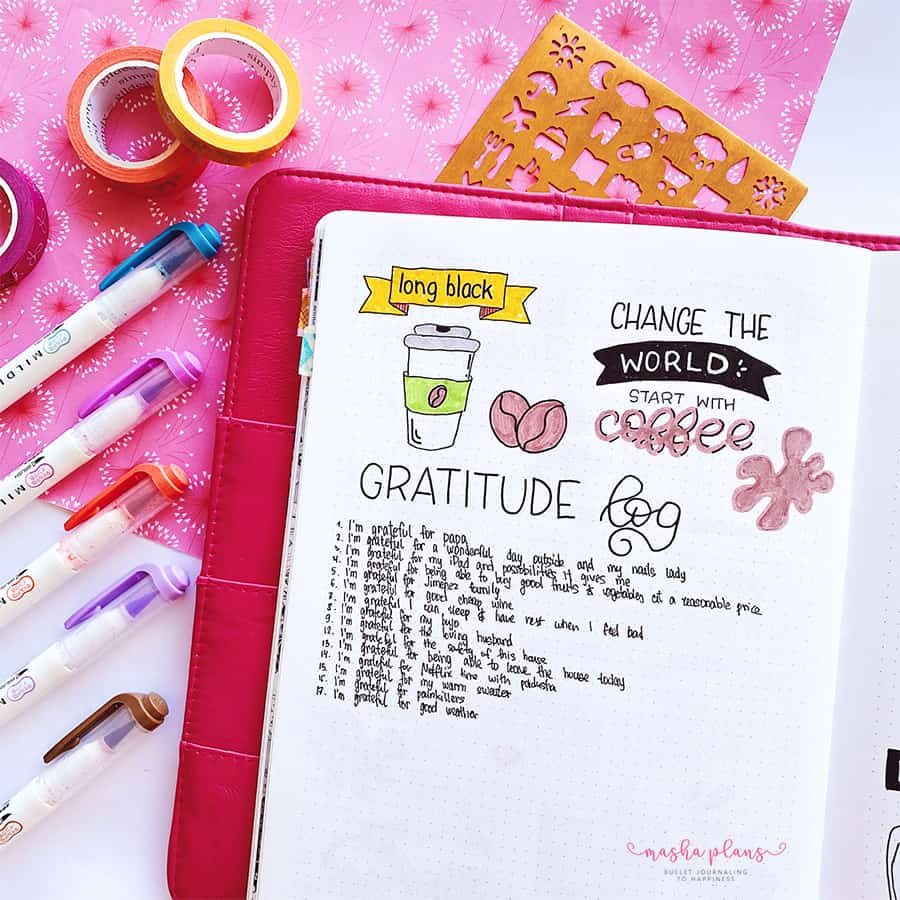
There is one important point, though: if you decide to give Bullet Journaling for mental health a try – be sure it’s real. What does this mean?
It means that to get all the benefits from using one, you shouldn’t make it for Instagram or Pinterest; you shouldn’t try for it to look flawless.
Always remember that social media is not real life. Even though the pages might look perfect in the photos, it isn’t really how they look in real life.
So when you use your journal, be sure you use it like it needs to be used, you use it for yourself instead of concentrating on making all the pages look perfect.
Well, let’s take a look now at different pages that will make your Bullet Journal a super tool for tracking and managing your mental health.
This post may contain affiliate links. They will be of no extra expense for you, but I receive a small credit. Please see my Disclosure for more details. Thank you for supporting Masha Plans!
Bullet Journal Supplies For Mental Health Pages
What do you need to create these pages in your Bullet Journal? Not much, really. Actually, whatever supplies you already have will be enough.
But, in case you’re looking for recommendations, here are my picks:
- Fineliner. These pens are the blood of your journal, and you’ll find them helpful when creating any type of Bullet Journal page. Sakura Pigma Microns are my favorite.
- Helix circle maker. It’s a perfect ruler for creating anything that is a circle, like a circle mood tracker,
- Markers. Something to add more color to your pages. I recommend Crayola Super Tips because they come in so many colors and are pretty affordable.
- Stencils. These 30 pieces journal stencils are perfect for decoration to your Bullet Journal, even if you’re not creative.
With that out of the way, let’s dive into different page ideas you should try if you want your Bullet Journal to help with your well-being.
Mental Health Bullet Journal Page Ideas
I gathered here as many ideas as I could think of, including, of course, the pages I used personally.
If you can think of anything else that might help with mental health – be sure to drop it in the comments, and I’ll be happy to add it to the blog post.
Anxiety Log
First are the pages you can use to fight your anxiety.
Start by creating a tracker and writing down the time when you have episodes. Then elaborate on it by adding what triggered the anxiety and what can be done to fix it.
I recommend having a tracker for anxiety attacks and triggers and maybe a separate page with ideas on how to deal with anxiety and the methods that work for you. So next time it happens, you can look at the page and know what to do next.
I like this tracker – it’s kind of like a year in pixels, only it’s a year of anxiety attacks and not moods.
It kind of makes me very sad to see how much the artist suffers, but I must say that if it’s a common occurrence it might be useful to have one big yearly tracker, so you can see your patterns better.
There is a lot of information in this tracker, but it’s all connected to anxiety attacks and it will be interesting to see it all filled. Eventually, the artist will have a much better understanding of her attacks and how they can be managed.
Mood Tracker
Tracking your moods can be just as important as tracking anxieties.
There are two approaches to a mood tracker. First, you can create a gradient from best to worst and just rate your days on a scale.
The second option is to assign colors to different moods and use them for tracking. When picking moods, think of how you often feel and choose those.
Tracking your moods will help you see your mental state and be more intentional about it. When you feel you’re down, you’ll be able to start thinking about how you can take a bit of extra care of yourself.
I got pretty addicted to creating everything in a circle shape.
As you can guess, I didn’t really use this tracker since I prefer to just grade my days from good to bad instead of choosing a particular mood.
This is the year in pixels page I mentioned before. The idea is to have a tracker for an entire year and fill it out as the year goes by.
It really comes out looking pretty cool, and it’s a great way to see the bigger picture of how your moods fluctuate.
Mood Notes
A great companion to your mood tracker can be a page with mood notes.
It’s a pretty similar idea to journaling but with a more condensed format. It’s a spread for you to elaborate a bit on how you felt and what happened during the day.
Maybe you can write what caused you to feel that way or include the note that you experienced other feelings.
You can do it week by week or on a monthly basis.
Self Care Ideas
If your mood tracker is telling you it’s time to get some self-care – be sure you have a page to consult with on that.
Creating a page with different self-care ideas, first of all, will make you think – what are the things that make you happy? What brings you that extra joy and shot of energy?
When you’re down and having issues with your mental health, you won’t have any will to think through what to do next, but with this list, you won’t have to!
This is one of my favorite self-care pages, it’s like a reference guide. Every time I need a pick me up I can just look at this page and pick something from the list.
I loved the idea of dividing things by categories, and it really helped me cause sometimes I feel the need for a certain type of self-care. With this list, it’s easy to navigate.
Finding time for self-care is not easy sometimes, but finding 15 minutes in your day is a much easier thing to do!
With these ideas, you’ll be able to have little bits of self-care throughout the day and end up having a much better time.
Finally, I wanted to include this incredible spread with six simple ideas you can do for feeling better in those hard times.
Habit Tracker
Habit trackers are a very powerful instrument in creating better habits and routines, and for your mental health, they can be crucial.
Your habit tracker can remind you of things to do and help you create healthier daily routines. It can also make you question your desires – if you’re not following through on a habit, why is it? Maybe it’s something that doesn’t work for you at all.
If you’re struggling with mental health, a few ideas on what you can add to your habit tracker are:
- Physical symptoms
- Medications
- Daily routines
- Self-care
- Skincare
A huge habit tracker that you can use for creating routines in your day. which is a very important step towards having a better mental state.
I liked the idea of dividing habits by different areas. Mental health depends on many factors, and that way you can see what are some things that really help and some that don’t really make a big difference.
I had to include this type of habit tracker just to give you a good idea of other formats. Maybe having separate little calendars for each habit would work for you better.
Gratitude Log
A gratitude log will help you find that one special good thing, so you’ll train your brain to positive thinking.
Add a monthly spread with enough space to write at least one good thing that happened to you during the day. You know what they say – not every day is a good day, but there is something good in every day.
A classic look of a gratitude log, and I love that the creator actually used two pages for this spread. I think when it comes to gratitude having more space to write things down is a great thing!
Here is probably my favorite gratitude log ever! I decided to go with a bit different approach calling it “positivity notes” and I like how fun it came out to be.
Finally, this is my favorite format lately, to have a gratitude log full of stickers, doodles, and images. That way, I can express myself and my moods in any artistic way I can.
Rant Boxes
Another side of the gratitude log is rant boxes. Sometimes things are just bad, so bad that you can’t just keep them inside. This is what this spread is for – write all your rants down!
Writing things down has an extremely therapeutic effect. You’ll feel better, and who knows, maybe when you see it on paper, it won’t feel like such a big deal.
For my rant boxes, I went with Angry Birds doodles because I think they are a perfect representation of this concept.
Done List
Do you ever look at the long list of to-do things and you just get anxious because it’s so many things and it’s just scary?
It happens to all of us, and it might be a sign you need to try out a different format – a done list.
Start creating lists of things you have done during the day. You’ll be able to see that you accomplished much more than you thought; it will bring back your confidence and give you a little break you need to get back in the saddle.
Post Therapy Notes
Having a session is great, but it’s also about the work you do outside the therapist’s office, and this spread will help you keep all the knowledge and insights you get from your therapist to keep working on it afterward.
Some things you might want to include in this spread are session summary, things to remember, and things that were tough for next time.
This is an example of my therapy notes. I usually divide it into three parts - things I wanted to talk about, things we figured out during the session and the next steps I'll be making to work through the issues.
Morning Routine
Having a routine and starting your morning on a positive note can mean so much for your mental health.
That’s why I recommend you add a morning routine page to your Bullet Journal. It doesn’t even have to be the routine you actually follow; for me, it’s my dream routine.
But as long as you have this page and you have an idea of what your ideal morning is – you’ll know what you can do to make your mornings better and what you should be working on to follow through.
This is not actually an exact routine; this spread is more about brainstorming all the things I actually want to do in the morning.
I kind of use this page to try out different things for my morning routine before I figure out what works best for me.
Evening Routine
Just like with the morning routine, having a set ritual to follow before you go to sleep might be exactly what you need to be sure you get a good night’s sleep.
Use this page to remind yourself to take good care of your body and create that perfect atmosphere for a complete rest during the night.
One more brain dump page for a routine, but this time it’s for the evening.
I must say by now, I got a bit more obsessed with skincare, so I have many more things I do before sleep.
This is my routine at the time I got my sweet puppy Bruce. As you can see all I was doing was so closely connected to him that I simply added him to my routine spread.
Sleep Tracker
Speaking of a good night’s rest – you might want to consider tracking it as well. Good sleep is the key to both mental and physical health, so you might want to be sure you get enough good quality rest each night.
It’s also interesting to see how your mental health and moods are influenced by how many hours and how well you slept the night before, so you might want to consider using these trackers together.
A time-consuming part of creating a sleep tracker is in filling out the hours of the day for each day. This format allows you to skip this step.
You learn how many hours you slept and then have a special graph to write the sleeping hours.
Water Tracker
Another essential thing is drinking enough water. This is a very simple thing that can help you be more energetic and positive.
However, it’s also a very simple thing to forget. I usually drink only when I’m thirsty and that’s already too late.
Add a water tracker to your Bullet Journal as a reminder to drink enough water during the day. Stay healthy, stay hydrated.
Medication Tracker
If you’re struggling with your mental health, chances are that you actually take some prescription medications.
I know for a fact it’s so easy to forget to take meds! It’s embarrassing how many times it happened to me.
So consider having a medication tracker in your Bullet Journal. It will remind you to take your pills every day and will be a great reference to keep track of the days you forgot to.
Super cute tracker, and I love that little pusheen nurse.
It’s also extra useful to have the refills section here – you don’t ever want to run out of medications.
Symptoms Tracker
Whether it’s your physical or mental health, tracking your symptoms can be useful.
It can be your first signal that the meds don’t work or maybe that it’s time to see a therapist and seek professional help.
Moreover, trackers like this will help you stay intentional and pay more attention to your feelings. By being more mindful of these things, you can vastly improve your mental health by preventing any fallouts.
I created this one in a B5 journal so I actually had more space than i needed, but that allowed me to add more doodles and that was super fun.
Exercise Log
Working out is proven to be beneficial for your mental health, so add it to your daily routines with a workout tracker.
This will remind you to stay active during the day, and if you use it with your mood or symptoms tracker, you might see some interesting patterns on how working out influences you.
Beautiful yearly workout tracker, in case you're ready to commit to your workouts long term.
If you're looking for inspiration on monthly workout trackers, you can get some free printables at the end of the post.
Monthly Review
This might be unexpected, but a monthly review can help you a lot!
By going through all your trackers for the month, you can see some new interesting trends that you can add to your review.
Plus, generally, for a mental state, you will get a huge boost when you see how much was actually done and go through all the memories you made during that time.
You can also use your monthly reviews to review how your mental health improved or how well you worked with your therapist.
I like for my pages to be more of a combination of useful insights, a gratitude log, and a little bit of memory-keeping.
Lessons I Learned
Another similar page is “lessons I learned”.
Just like with the review pages, the purpose here is to learn from your experiences. Think of the breakthrough you had with your therapist or a-ha moments you had from looking at your different trackers.
The thing is, if you don’t write it, you will forget about it eventually. But if you add all your insights to a little page like this – the lessons will live on and will keep helping you lead a better life.
This was really a very fun page to create.
Coming up with things to write on this page made me think about the entire year and reevaluate everything that happened.
I love that now, looking back at this page, I remember what actually happened to teach me that lesson, and that is very valuable.
Things I Love About Myself
This is a cute little page that can be a great help with your mental issues.
When you’re down, it’s easy to start thinking you’re just the worst person in the world. I’m not suffering from any mental health issues myself, but I absolutely have moments like that, and they are unbearable.
The page that helps me to live through these days is “things I love about myself”. I sat down one day and went through all the things I love about myself.
Now this page is my stronghold. If I ever suffer from a lack of confidence or just feel the worst – I can always look back at this page and remember that I love myself for all these reasons.
How To Use Your Bullet Journal For Mental Health
Before you hurry to create ALL the pages, here are a few tips to help you get the most out of it.
It’s very appealing to just jump into it and do everything, but that might have the opposite effect on your mental health.
Here are a few things to consider before you get started.
- Take it easy
In fact, starting by using all of these pages and more might be a bit too overwhelming. In my experience, it usually means you don’t get all the benefits and add more stress about filling out your newly created pages.
- Keep it simple
I know there are tons of beautiful pages online, with perfect lettering and incredible drawings. But don’t make it your goal. It’s ok for your page to be different, something more simple and easy to create. The goal is to have something you’ll use, so just create it the way you can, without waiting to make it perfect.
- Be kind to yourself
This means if you make a mistake – don’t blame yourself and don’t allow this little thing to ruin the whole page for you. If you had a bad day and skipped filling out your tracker – don’t blame yourself, be more forgiving.
- Review your pages
It’s kind of important that you don’t just start using some of these, but also take some time to analyze it and see if it’s working. Maybe after some time you’ll need to change the pages, or maybe even try something completely different.
Free Bullet Journal Printables
There are some free printable habit and mood trackers in the Resources Vault, as well as some self-care stickers you can use to decorate your mental health pages.
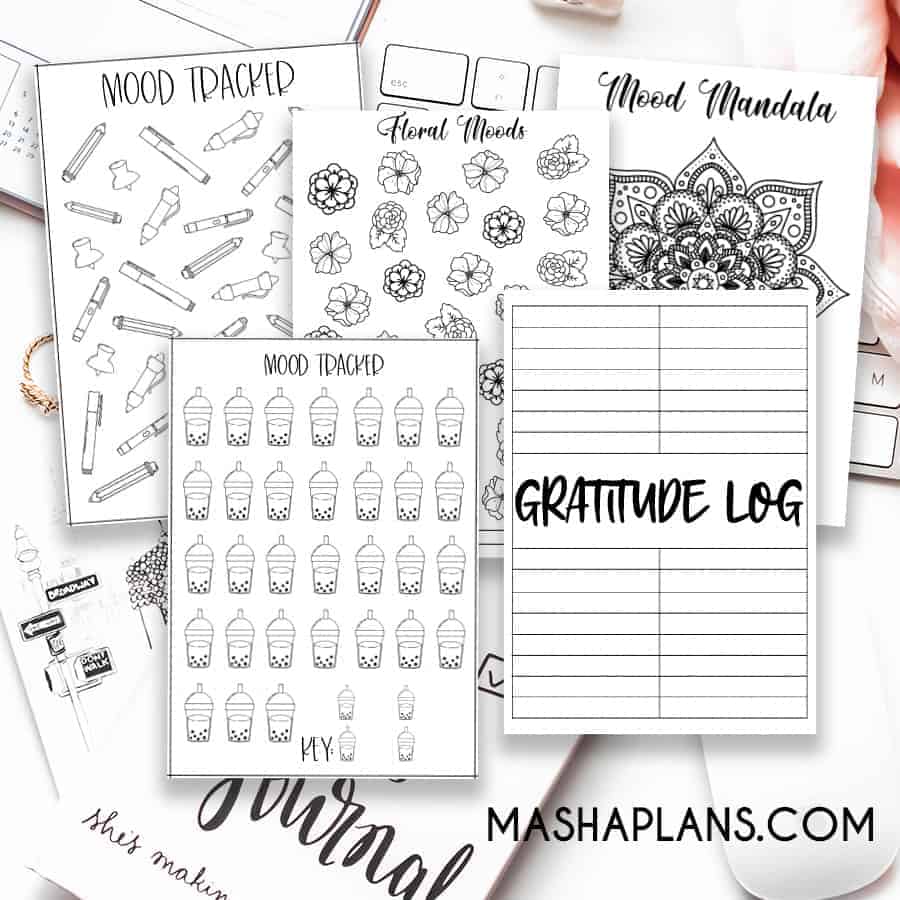
If you’re not part of Planning Mashers yet, be sure to sign up and get access to the Resources Vault and 50+ free Bullet Journal printables.
If you’ve never used printables before, be sure to check my post How To Use Printables In Your Bullet Journal.
It’s pretty basic, and you can find all the supplies you need in my post Supplies For Using Bullet Journal Printables.
More Resources
Do you want to learn more about ways your Bullet Journal can help you? Looking for more resources with page ideas and inspirations?
I’ve got you covered! There are tons of posts on the blog about this and more, so here are a few to get you started:
- Health And Fitness Bullet Journal Page Ideas
- Bullet Journal Sleep Trackers
- 25 Simple Habits To Improve Your Life
Hope this post was useful if you find it so, please share! If you enjoy my content and want to show your appreciation, please consider supporting me with a cup of coffee.
And remember: Keep Bullet Journaling and Don’t Be A Blob!






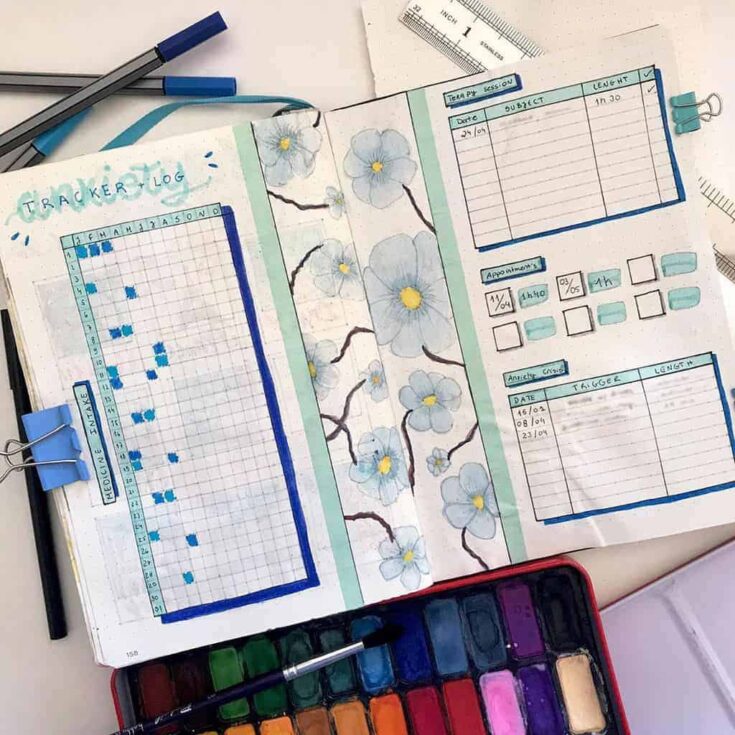
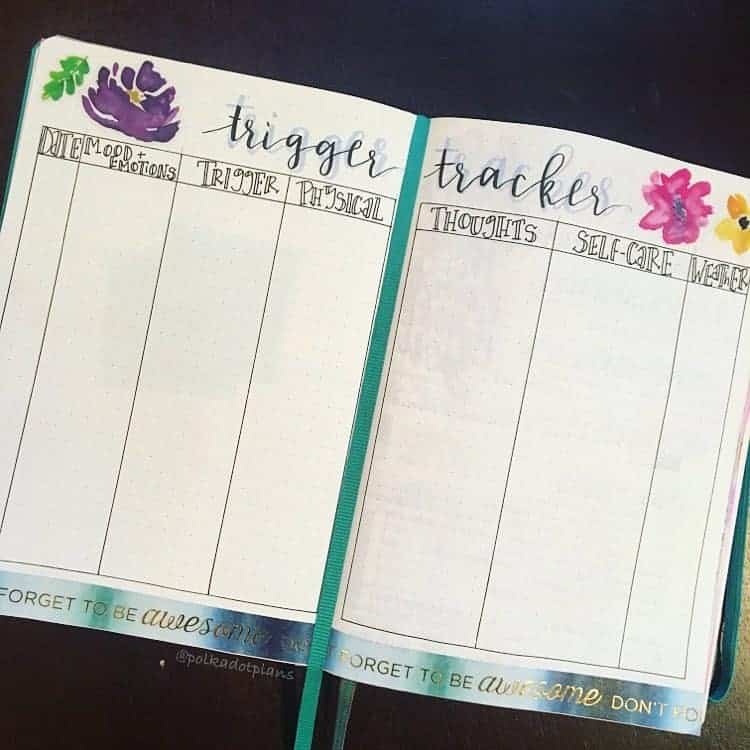
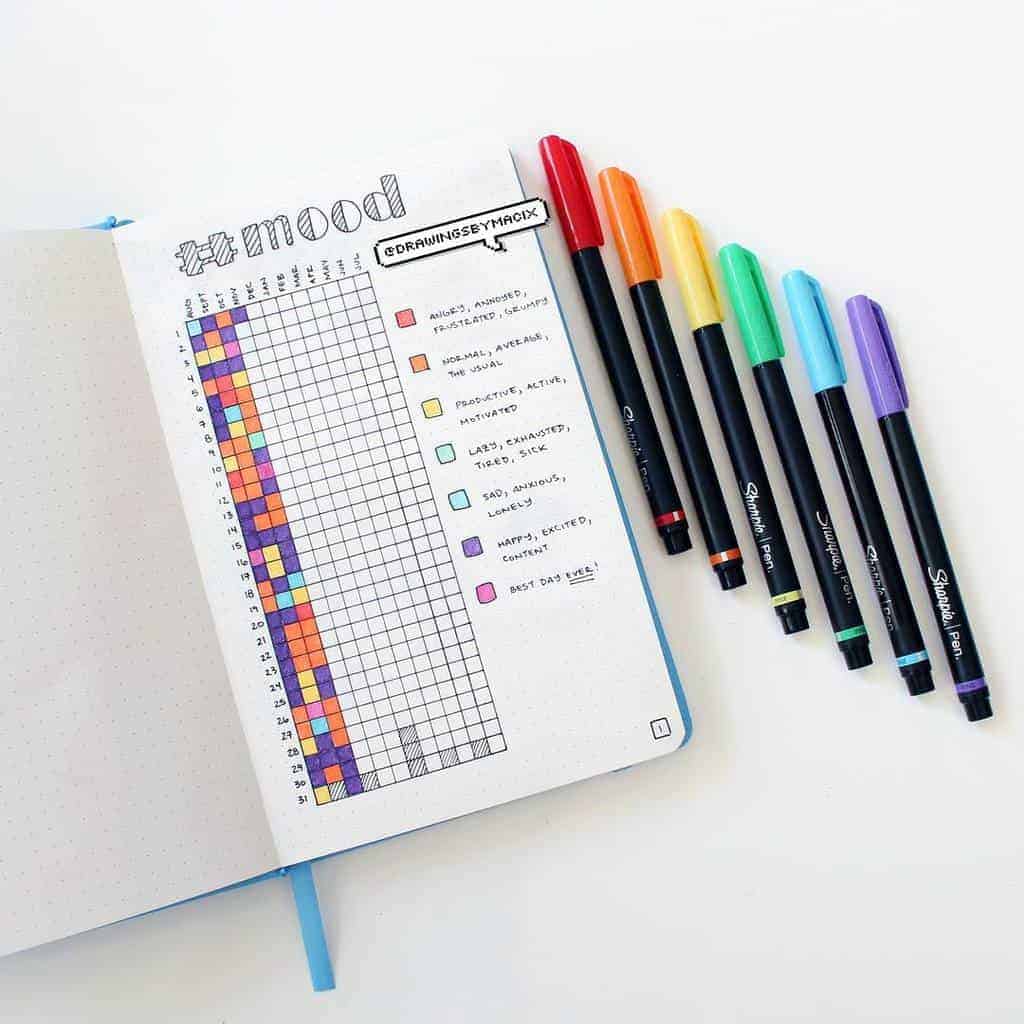
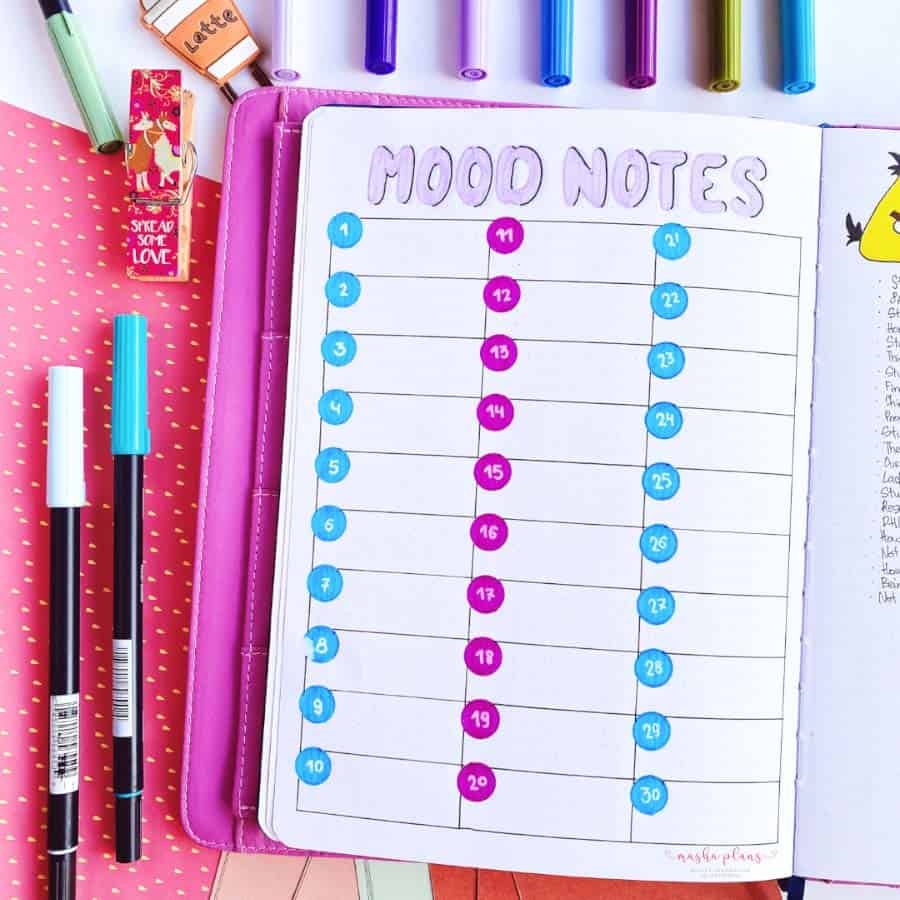

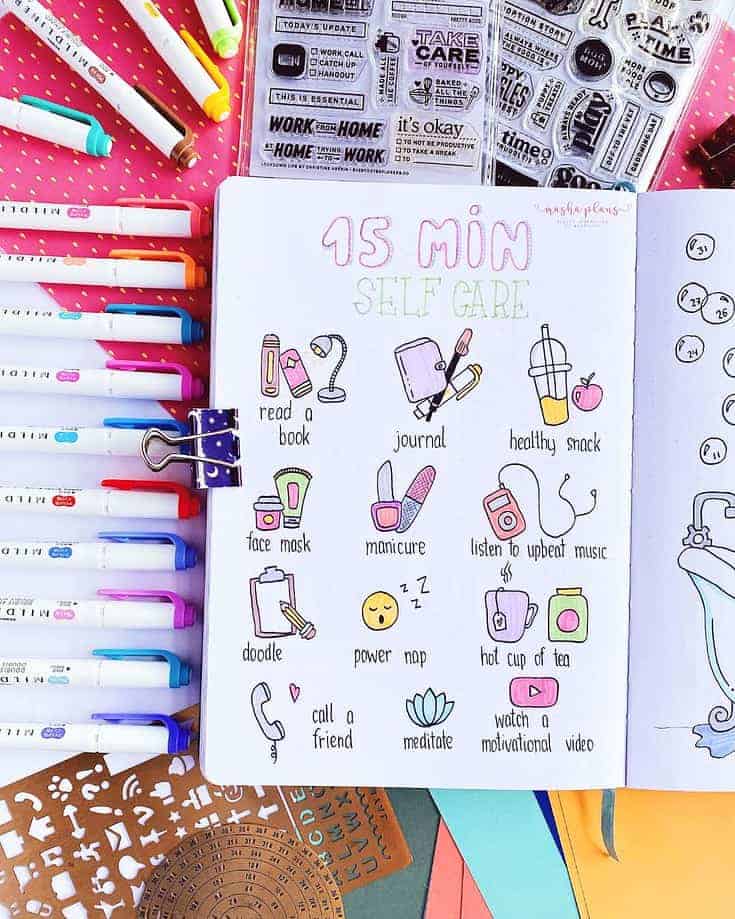
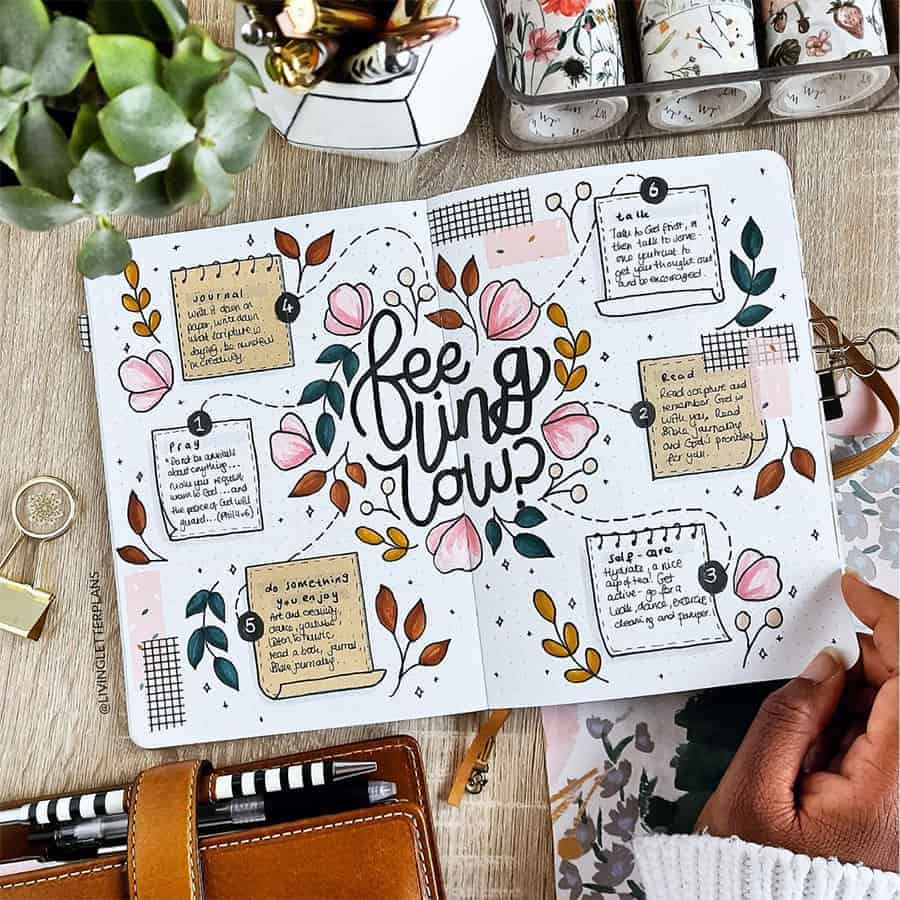
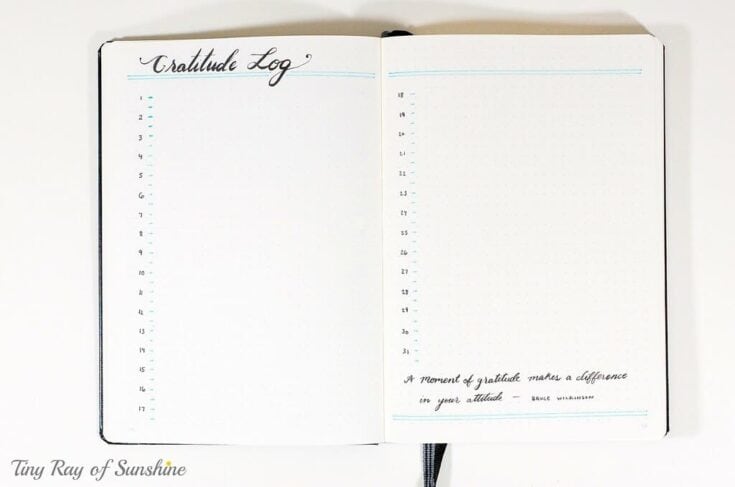
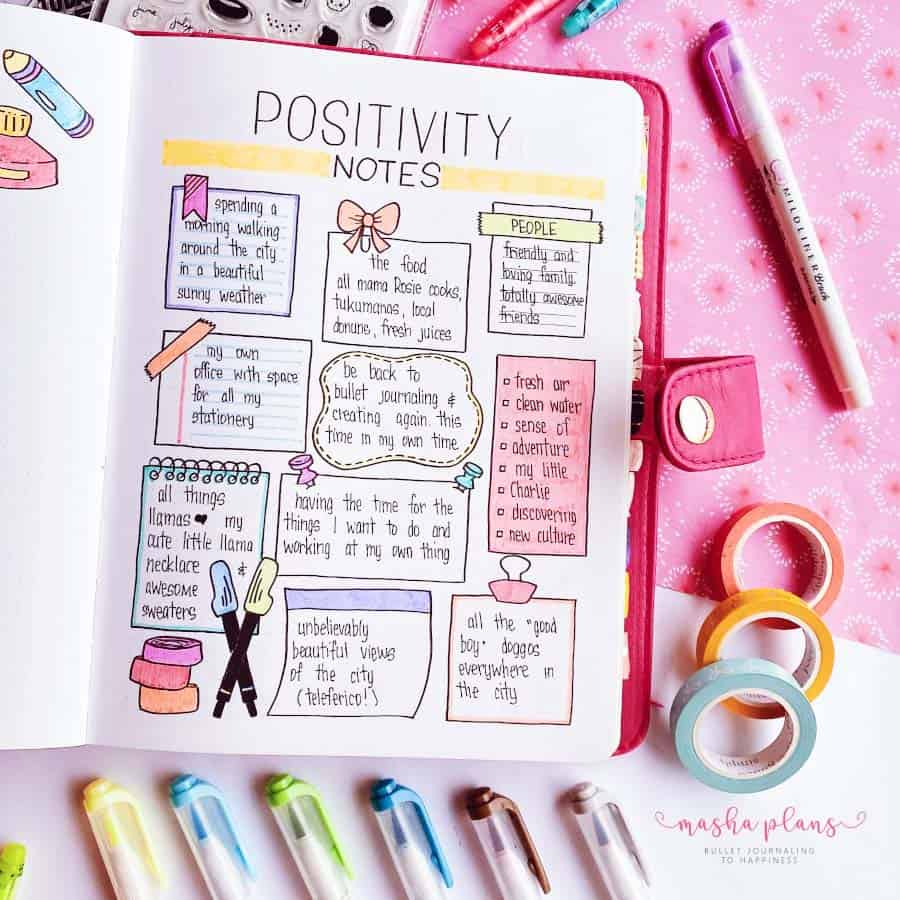

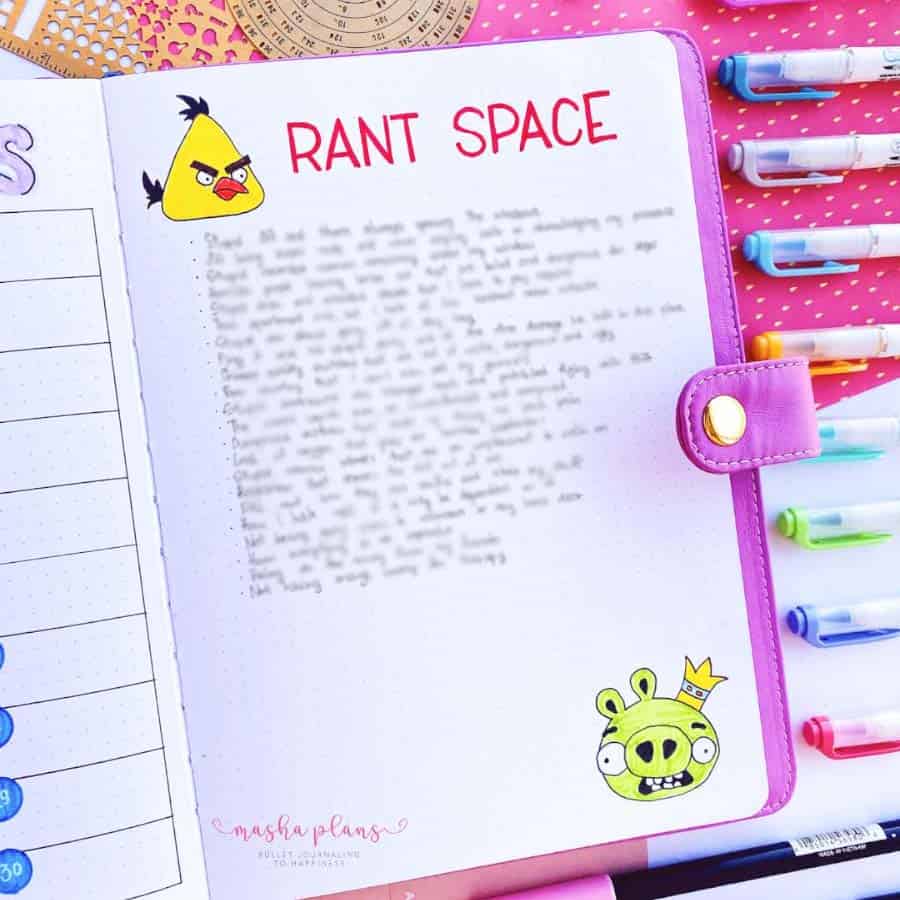
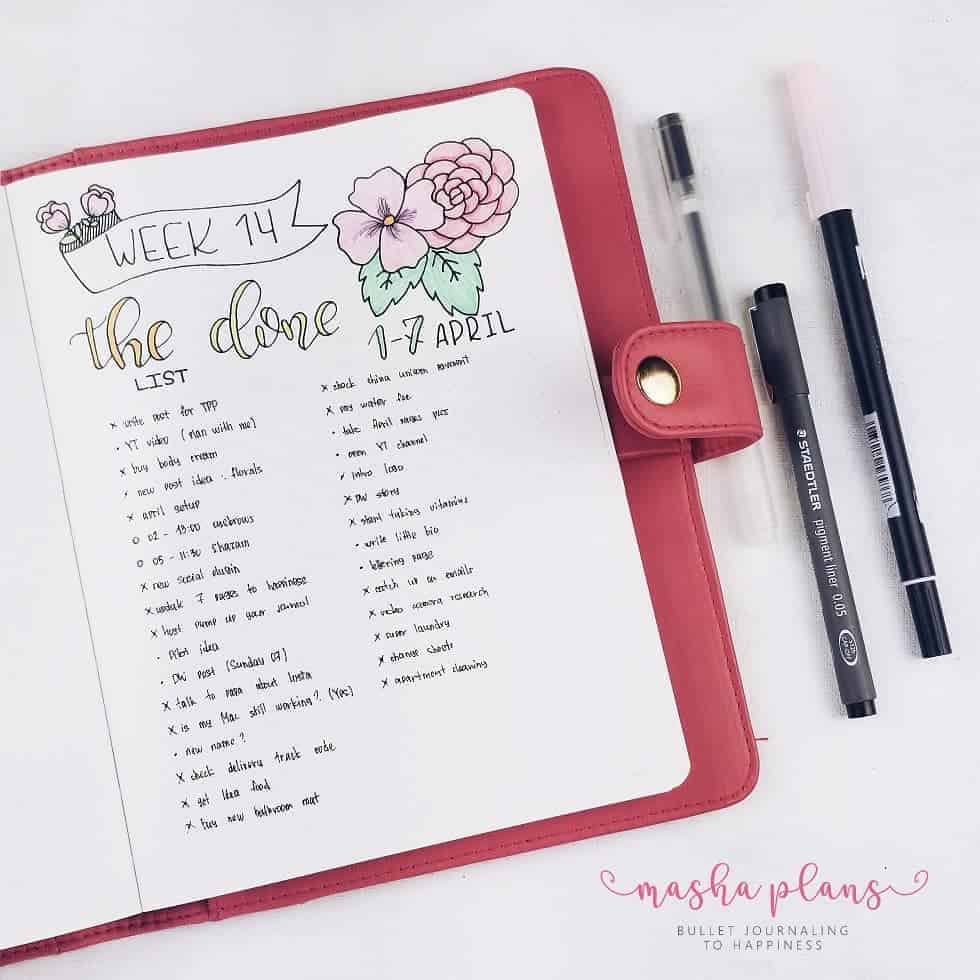
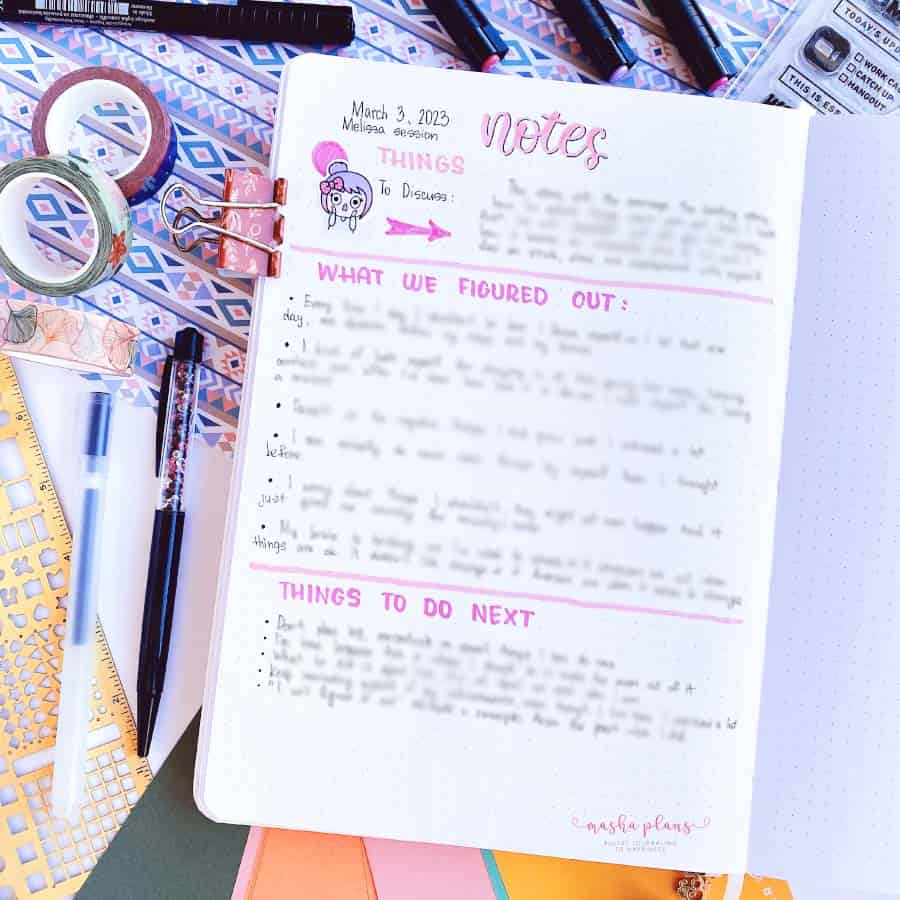
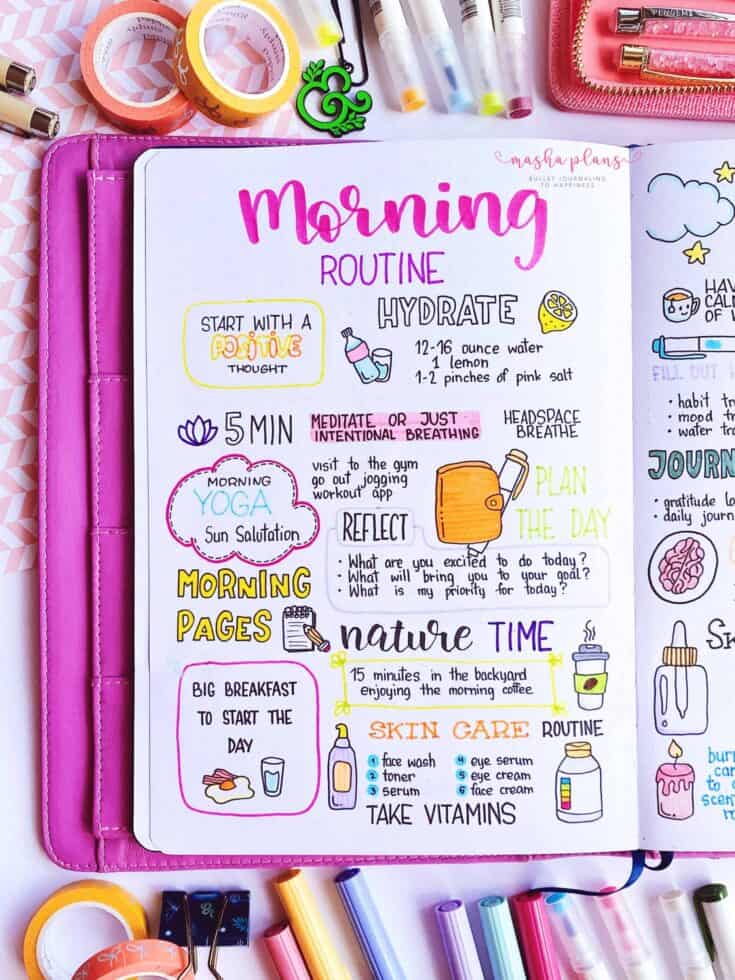
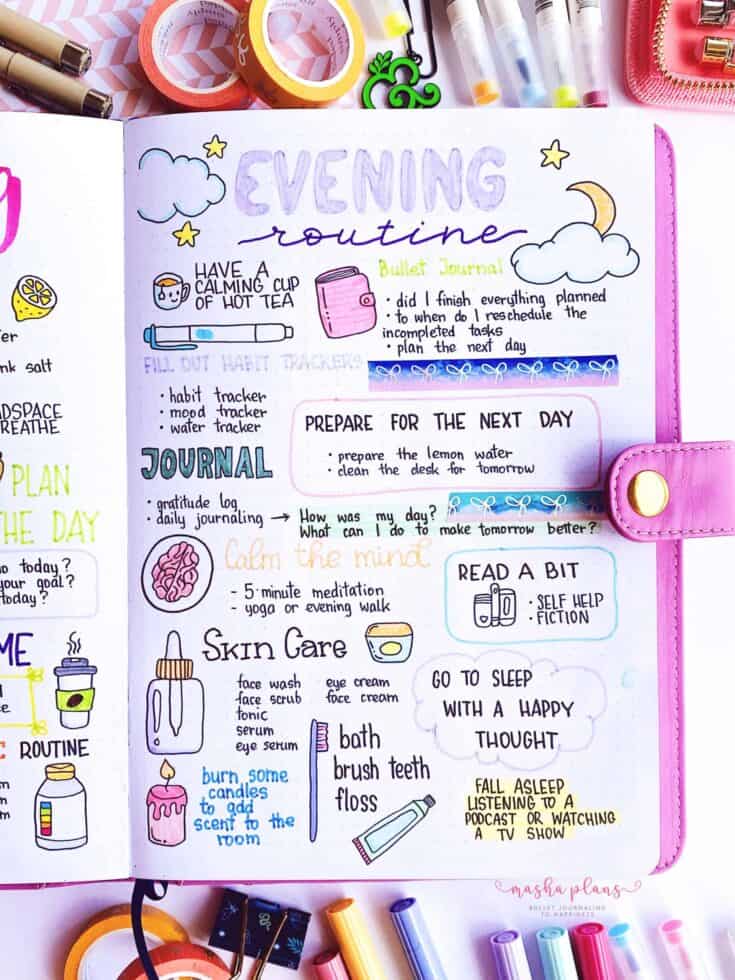
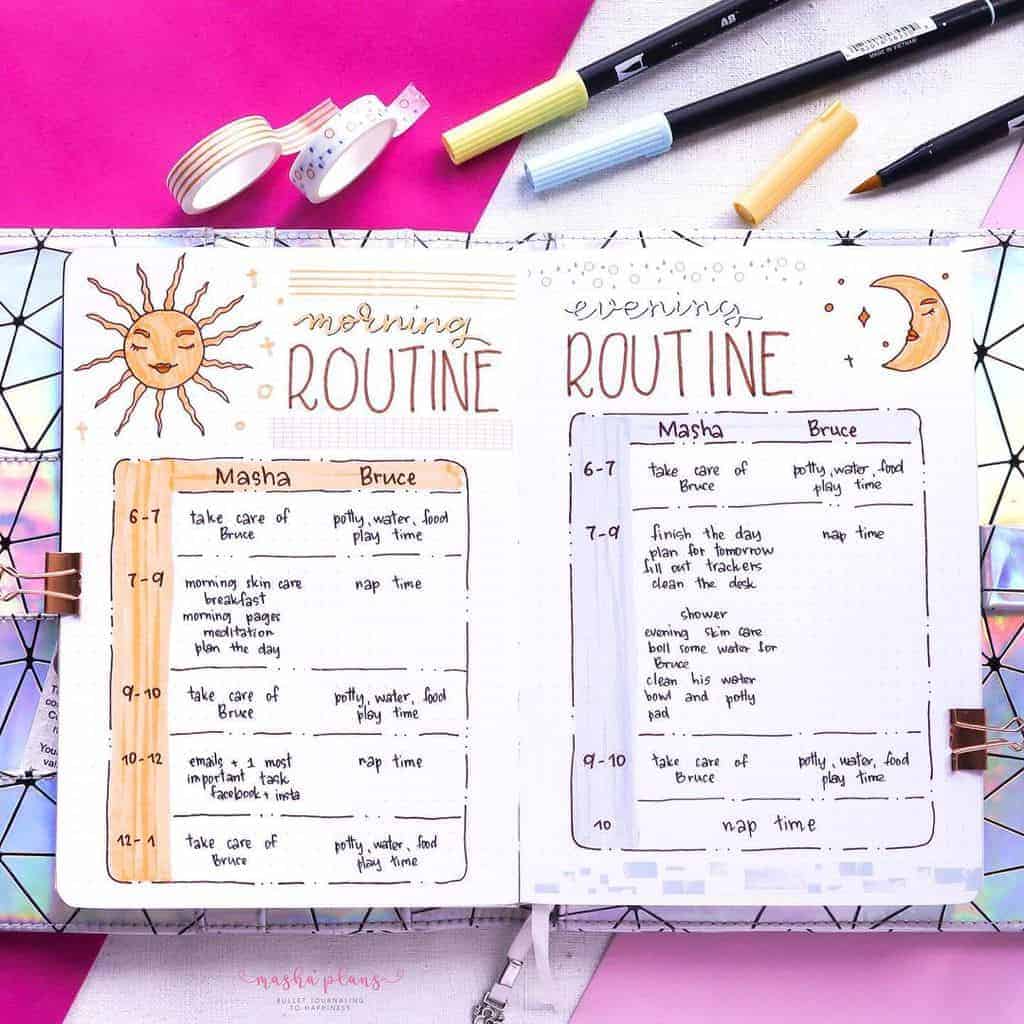
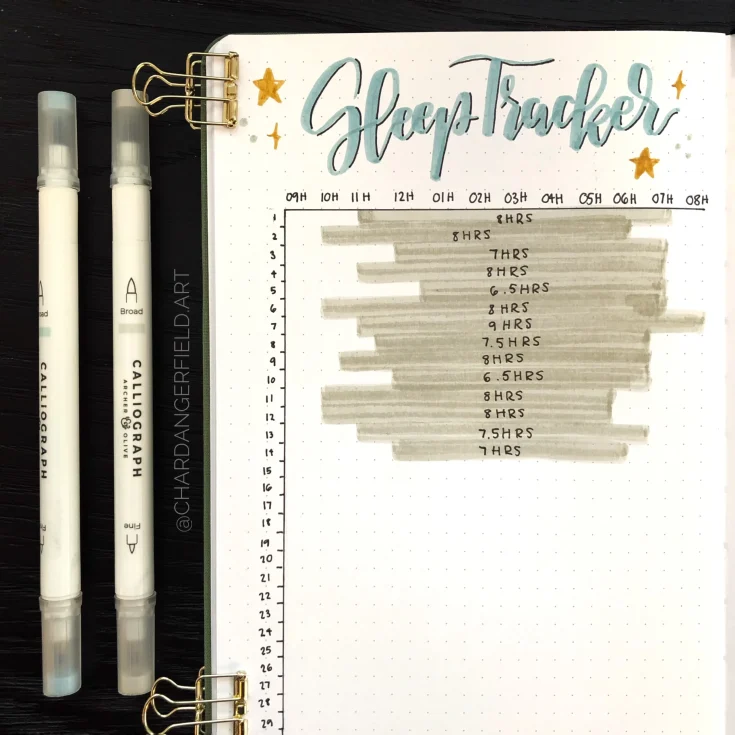
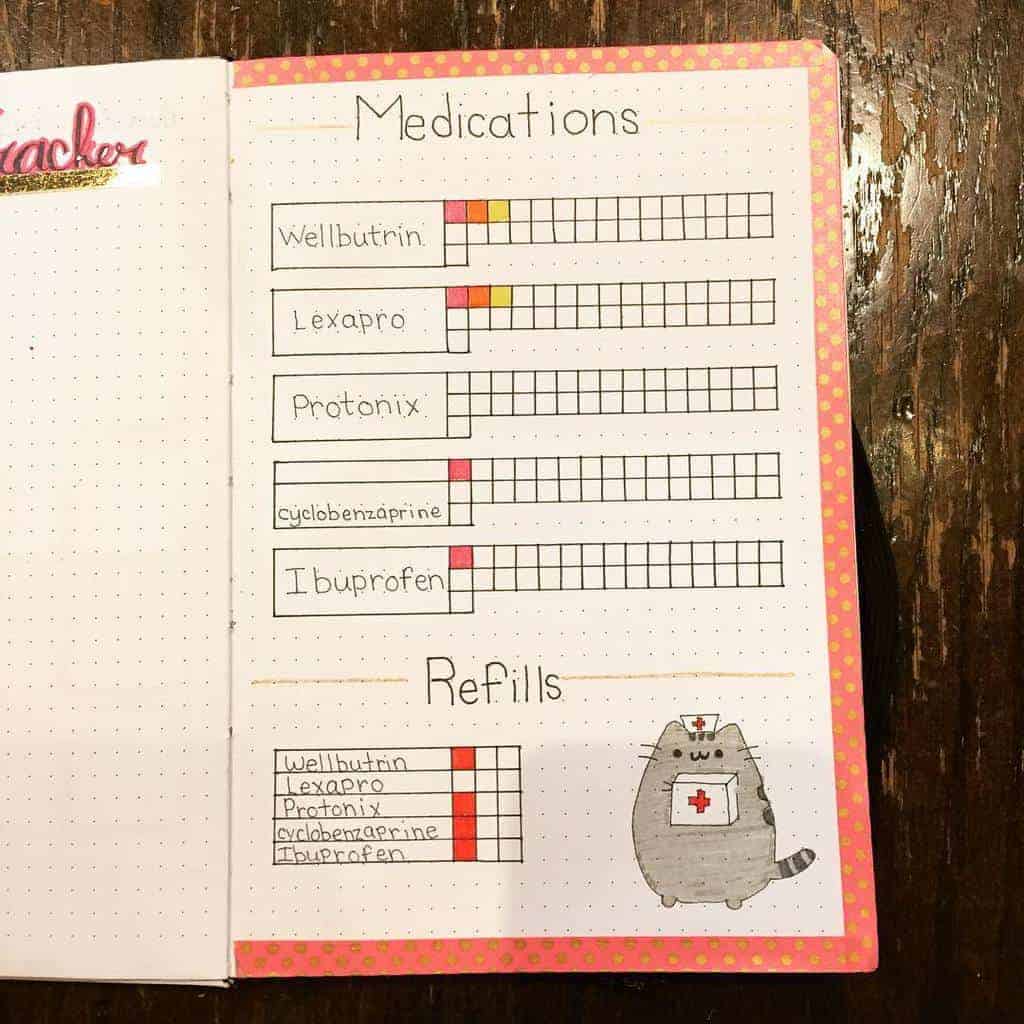
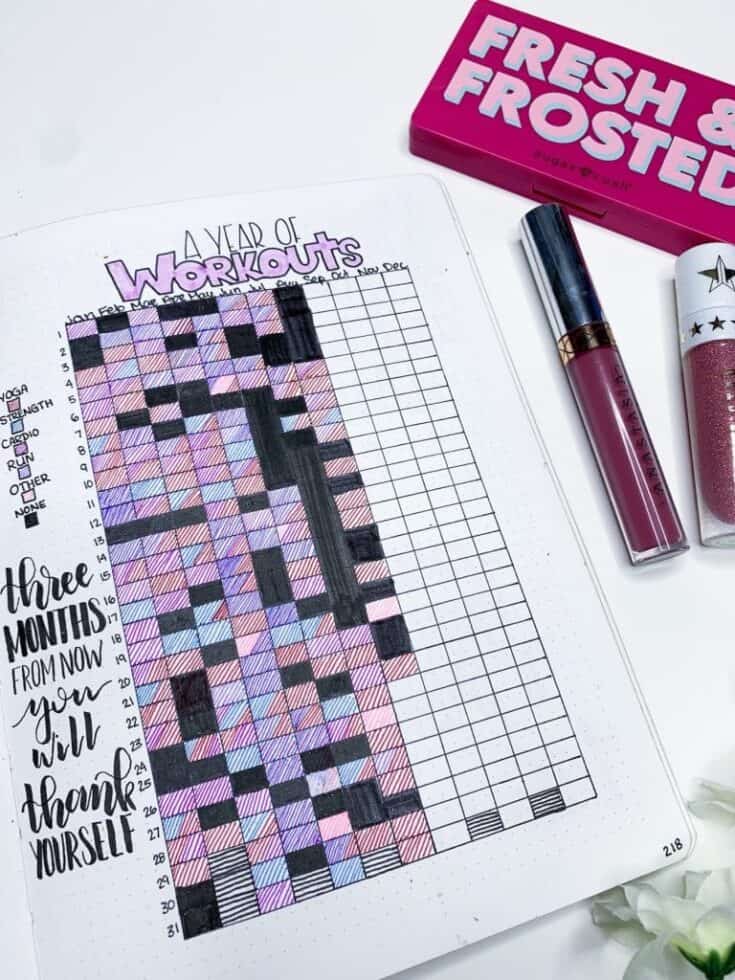
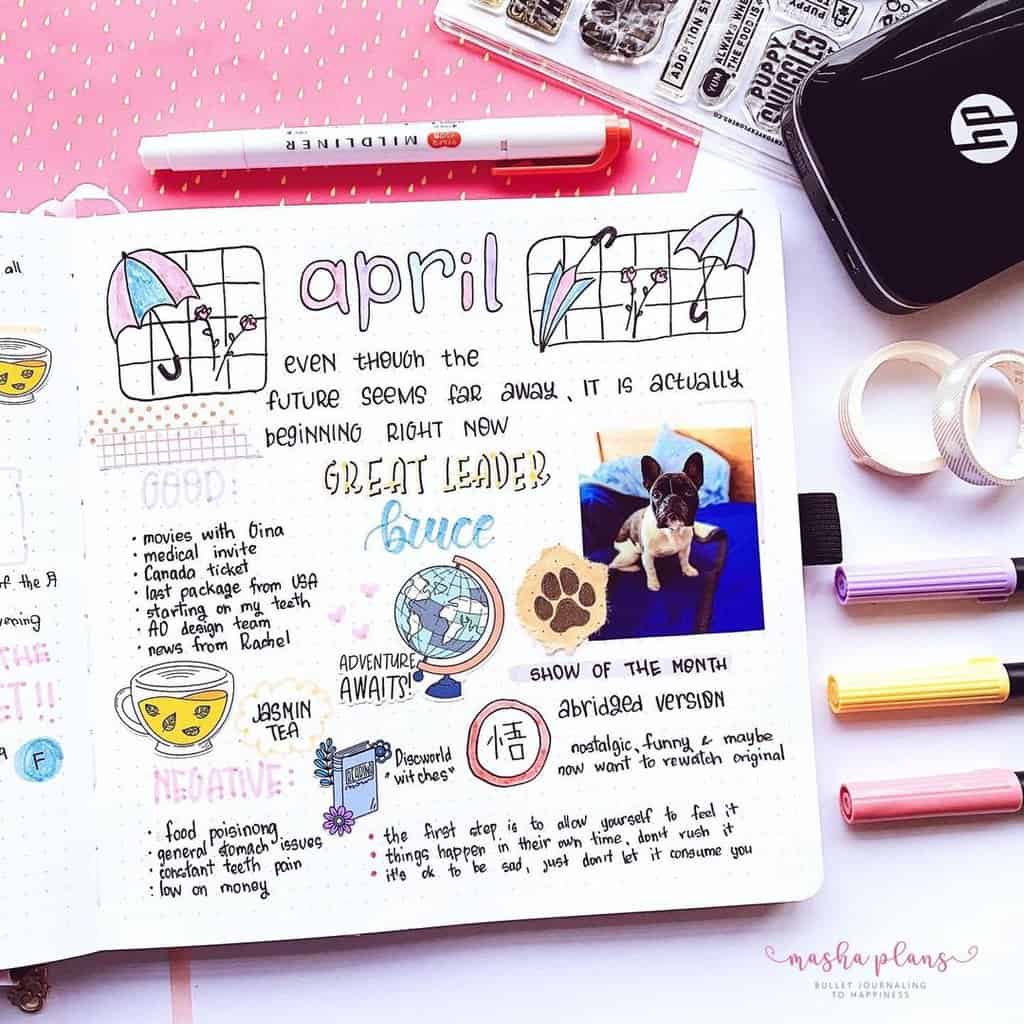
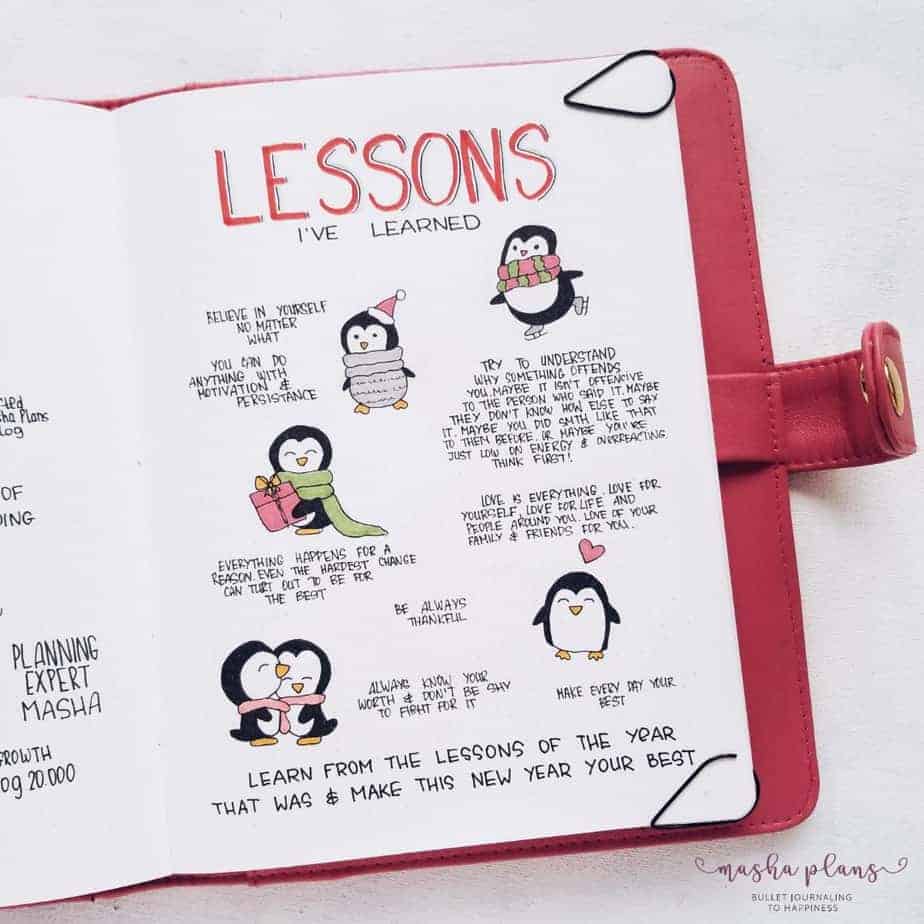
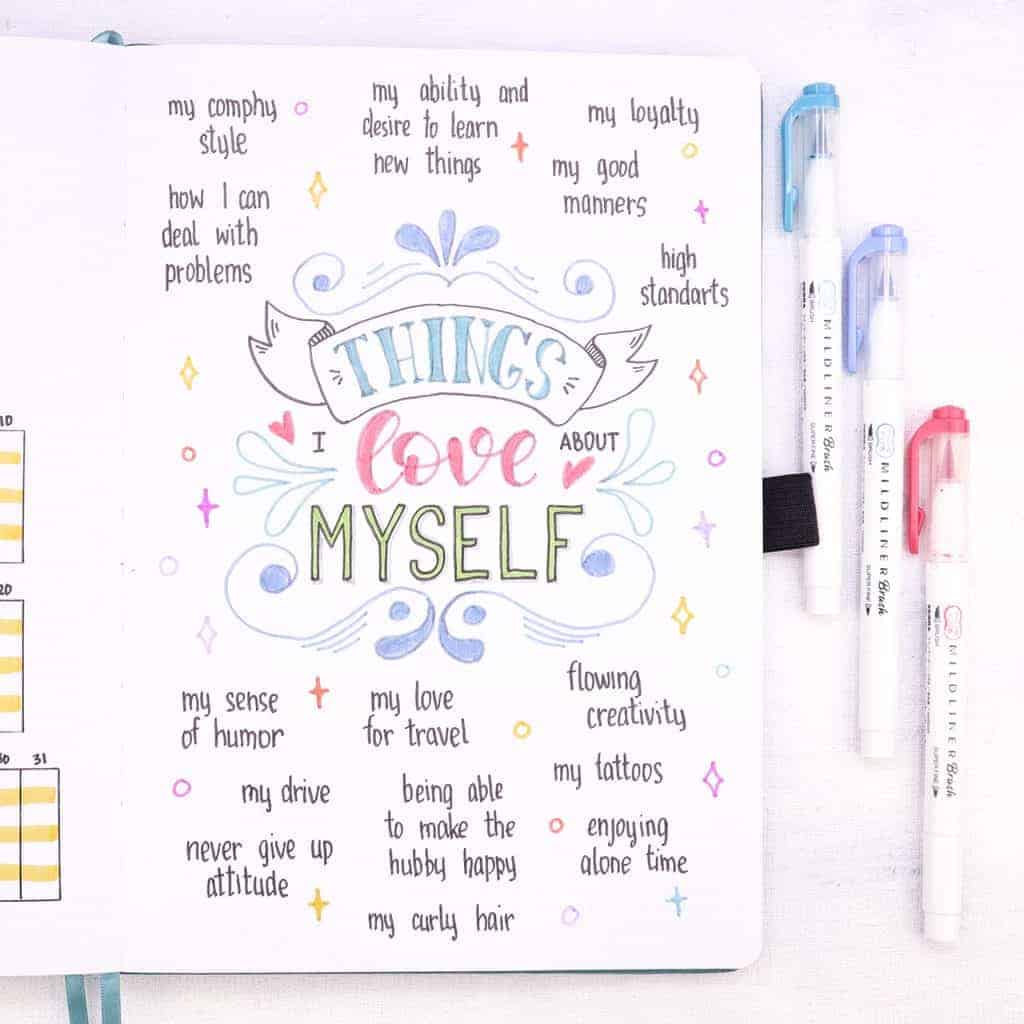



Hi Masha, I’m a 11 year old named Shreya and I was looking for some ideas to make my journal look aesthetic, organised, and neat. Your ideas were perfect for me. I have had lots of fun drawing charts and hearts all over my tiny Kuromi journal. I also really appreciate you for being open to help other people with mental or personal problems.
Regards,
Shreya Mahesh =)
Hey Shreya! I’m so happy to hear my blog post helped you, and thank you so much for such a sweet comment!
Hi there. Love your website, advice, journal ideas … just annoying that ADVERTS are plastered everywhere on the bits were trying to read ! But I’ll try to persevere ! 🙂
Hey Nicola, thanks for persevering <3
Very creative bullet journal ideas ! ! ! ! ! ! ! 🤗 I certainly will return to this site for ideas when I am ready to bullet journal.
Glad you liked these ideas and can’t wait to see you joining our Bullet Journal family.
Of all the journaling bloggers out there right now, I keep coming back to yours! You are so organized and have it all together! You really seem sincere and enthusiastic! I want this to work for me as it has for you and so many others. I know it is possible. It is taking me a lot of practice and hard work right now. Did you struggle with getting into the routine or were you just one of those naturally organized individuals from the beginning? 🤪😂
If you have any tips for me, let me know! I have a feeling it helps to have support from a loving hubby! Right now, I am not thatfortunate and I am quite the loner. I am trying to pull from my strength within. I am finding outside mentors in resourses that are surprising like people like you! Thank you for the time and effort you have given to this work you share. It does mean more than you think.
Sincerely,
Dawn Copley
Dear Dawn, thank you so much for such a sweet message!! I’m so happy I can help. Honestly, I’m not as organized as I might seem and none of this actually came naturally for me. But I do my best one day at a time and eventually, it kind of worked out. I have a post with my best tips on establishing the habit of journaling, you can check it here: https://mashaplans.com/easy-techniques-to-make-your-bullet-journal-habit-stick/ My best tip is probably just always remember why you need to journal.
I love all these ideas! They’re practical and motivational for starting my first bullet journal. Thank you for this.
Emily, thank you so much for saying that! I’m happy to hear you’re excited to start yours =)
Really good ideas! I will use them to create my first bullet journal.
Thank you! :)
Thank you very much! I’m glad to hear it was helpful =)